75 years ago, the first RNZAF personnel of No. 14 Squadron paraded through the streets of Auckland to board the British aircraft carrier HMS Glory. Bound for the homeland of their recent enemy, Japan, it was an overseas odyssey which would last for two years.
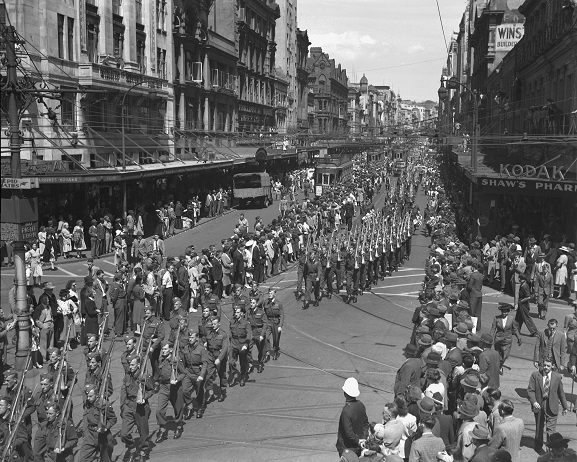
The Occupation
As soon as the Japanese surrendered to the Allies, the question of an occupation force was raised. Given that the British had lost much prestige during the Far Eastern war and was economically weakened, the Dominions were asked to contribute forces to what would ultimately be known as the British Commonwealth Occupation Force (BCOF).
On 21 August 1945, the New Zealand Government agreed to provide one fighter squadron in addition to an army contingent to the BCOF. The selection of No. 14 Squadron to participate was historically most appropriate. The Squadron had been formed out of the remains of No. 488 Squadron on its return to New Zealand in 1942. That fighter unit had been the first New Zealand Squadron to confront the Japanese in the ill-fated Malayan and Singapore campaign of 1941-1942. The deployment in March 1946 was also important at a time when the RNZAF was being stripped down to the minimum and participating in the occupation would provide purpose and positive publicity.
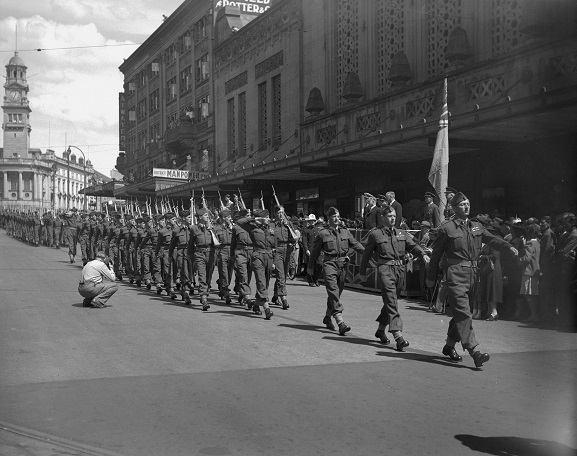
En Route to japan
Preparations continued through late 1945 into early 1946. The 24 FG-1D Corsairs the Squadron would operate were provided by the Americans in an extension of the Lend Lease scheme to cover their cost. Flying personnel were nearly all Pacific veterans, until recently fighting against the Japanese. They were led by Squadron Leader Jesse de Willimoff, one of the most experienced New Zealand fighter pilots of the Pacific Campaign. His three flight commanders were also picked for their wartime experience.
After training and leave, the Squadron re-assembled at Ardmore for departure. Pilot Bryan Cox takes up the story of their preparations to leave Auckland in his book, Too Young to Die:
On 8 March the entire 300-odd airmen assembled near the Town Hall and marched triumphantly down Queen Street to the waiting [aircraft] carrier, officers and NCOs with revolvers, other ranks with rifles and bayonets through a crowd six-deep along the route. We boarded the Glory and it was not long before we were casting off to steam down the Waitemata Harbour and on our way northwards.
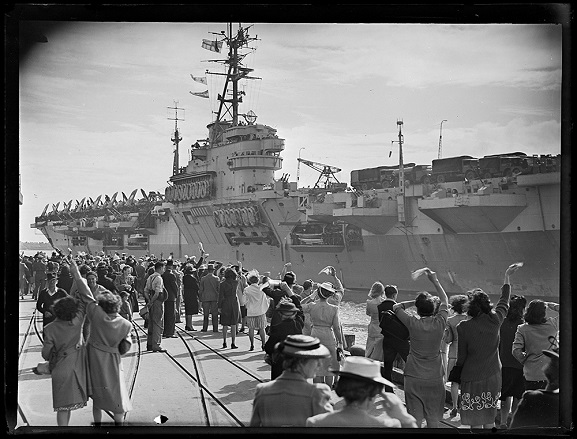
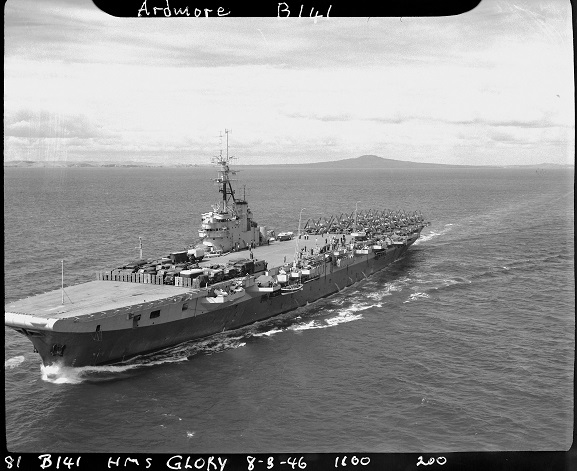
At sea
The voyage was relatively uneventful. The unit’s vehicles were on the front of the flight deck and the Corsairs secured at the stern. A space between was reserved for recreation and training, as Bryan Cox recalled:
Blue skies and calm seas for most of the voyage meant that much time was spent lounging on deck in the sun or sitting in the safety nets looking down at the bow cutting through the blue Pacific waters and causing startled flying fish to skim across the water-tops to safety. When not so occupied, a popular pastime was to watch the deck hockey games which sometimes became quite willing, particularly when the engine-room played the officers.
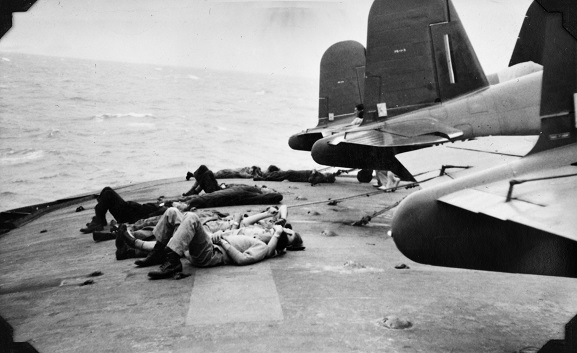
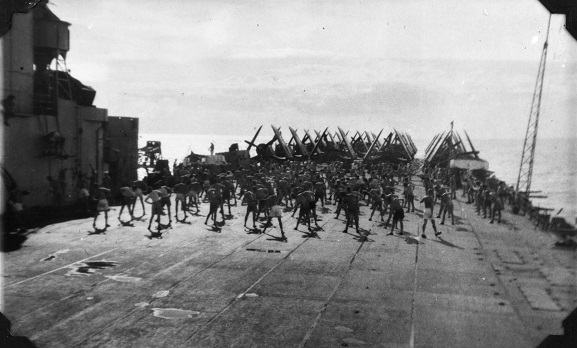
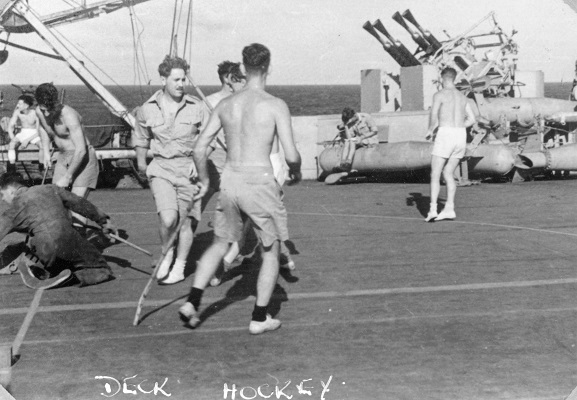
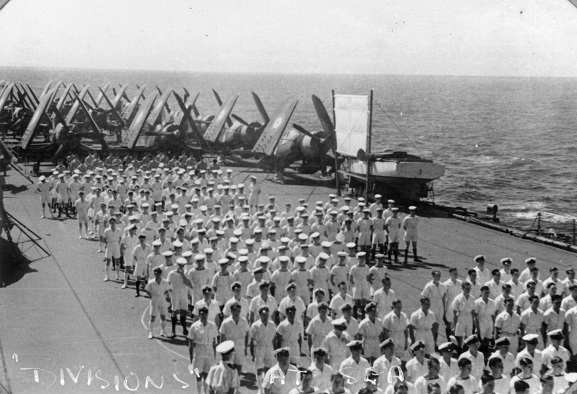
In addition to the men, vehicles and aircraft, vast amounts of stores were transported below in the hangar deck. When some of these stores started to disappear mysteriously (taken by the Royal Navy crew), a 24-hour armed guard of New Zealanders patrolled the hangar deck.

Arrival in Japan
After 15 days at sea, HMS Glory sighted Japan and from the flight deck, the New Zealanders caught sight of what Pacific veteran Bryan Cox described as “this ominous country of which we knew so little but had imagined so much”. Glory was moored overnight at the dockyard in Kure next to the liner Strathmore which had brought New Zealand troops from Europe.

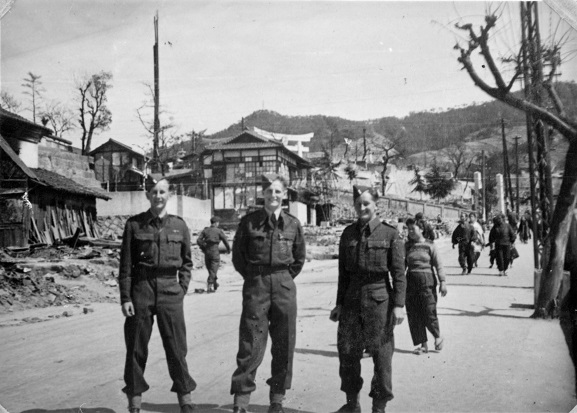
HMS Glory then sailed 30 miles through the Inland Sea with the aircraft to their first home at Iwakuni, while some members of the Squadron drove from Kure to Iwakuni, through the sobering remains of the atomic bombed city of Hiroshima.


This was just the start of the story of J-Force. Future blogs will explain what happened to No. 14 Squadron and other RNZAF units and individuals who contributed to the Occupation Force in Japan for the next two years.



